(click image to play video)
What vegan finds do you have at YOUR local Dollar Tree?

By Toni Okamoto
This recipe was inspired by my awesome friend Amy. She often makes several batches and freezes calzones individually for her husband to take to work. You can mix and match your pizza filling using whatever veggies you have in your fridge. They are delicious!
Ingredients
Pizza Dough:
Filling:
Directions:
If you have leftover calzones, they freeze fabulously!
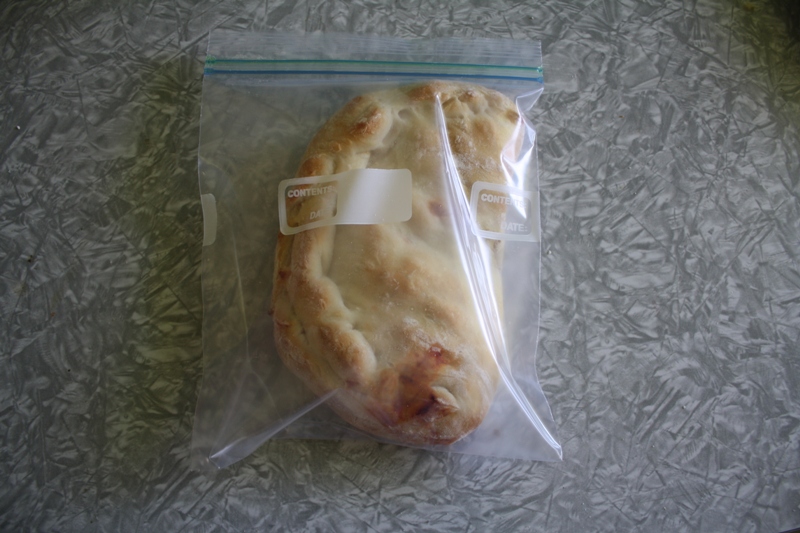
The fantastic folks over at Vaute designed four shirts whose sales will benefit Vegan Outreach. $5 from the sale of each top will go to VO!
The shirts are $35 each and are all sustainably printed in Brooklyn. They were designed by Leanne Mai-ly Hilgart and illustrated by Jessica-Joan Causing.
Get yours today and spare animals from suffering while you shop!
By Lori Stultz, Outreach Coordinator
Last week, in celebration of students’ return to school, the folks at Vegan Outreach offered a few helpful pointers for leafleting.
Today we wanted to discuss a similar form of activism: tabling. Like leafleting, tabling can be an effective way for students to educate others about factory farming and other animal abuse related issues. It provides a great platform to engage in conversation and offer information and advice on how others can most effectively help prevent animal suffering. That is, through reduction of their meat and dairy consumption.
Most often, tabling is done as a group activity (perhaps with an animal advocacy group on campus), but it can also be done solo. Before setting up a table on campus, though, you will need to check in with the campus student activities center to find out where and when you can table on campus. Many campuses have designated locations and times that are acceptable for tabling.
Whether you’re by yourself or with a group of animal-loving friends, your information will be more compelling if you keep these things in mind:

Keeping these points in mind will ensure a successful tabling experience! And be sure to visit the Vegan Outreach website to find accurate and useful information regarding animal-related issues and tips for how to go veg. You can also order literature to use at your table through our website!
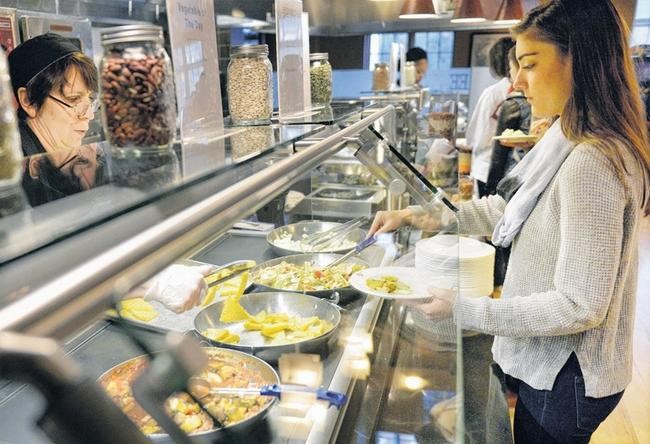
By Jon Camp, Executive Vice President
Great news! Aramark, a food catering company serving over 500 college campuses, will be dramatically expanding its vegan menu. Some of the new options include Vegan Home-Style Pancakes, Butternut & Black Bean Chili, Sesame Noodles, and an assortment of vegan desserts.
This change comes amidst increasing demand for vegan options. According to Scott Jahren, Aramark’s Executive Chef and Director of Culinary Development, “Based on Aramark’s propriety customer feedback platform and dining surveys, the number of students interested in vegan options has continued to steadily increase over the past several years.”
Thank you, Aramark! And thanks to all of you who continue to get out there and do outreach to today’s college students — your work is playing a vital role in these exciting changes we’re seeing.
Win a free one-on-one Vegan Mentor Session with Jamie Kilstein, comedian, cohost of Citizen Radio, and coauthor of #NEWSFAIL. With Jamie’s mix of humor, compassion, and insight, we know you’ll find this session both helpful and hilarious.
Complete the form below by next Friday, Sept. 11, for your chance to win!
And check out Jamie on Twitter @jamiekilstein and Instagram @VeganMMA, and pre-order his new album.
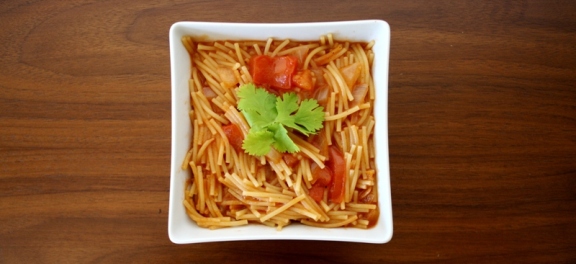
By Toni Okamoto
Here is a quick and easy recipe for the “sopa” my grandma used to make for me. It’s a Mexican pasta dish spiced with cumin and it’s very, very delicious! It also happens to be extremely inexpensive, this recipe was only $1 to make!
Thanks to my Mom for donating this recipe.
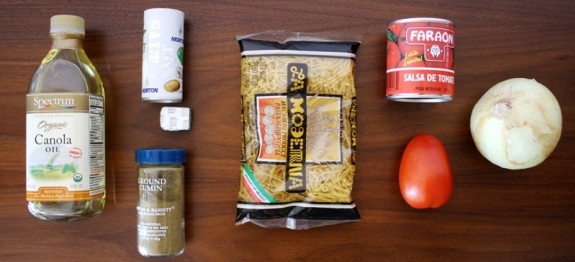
Ingredients:
Directions:
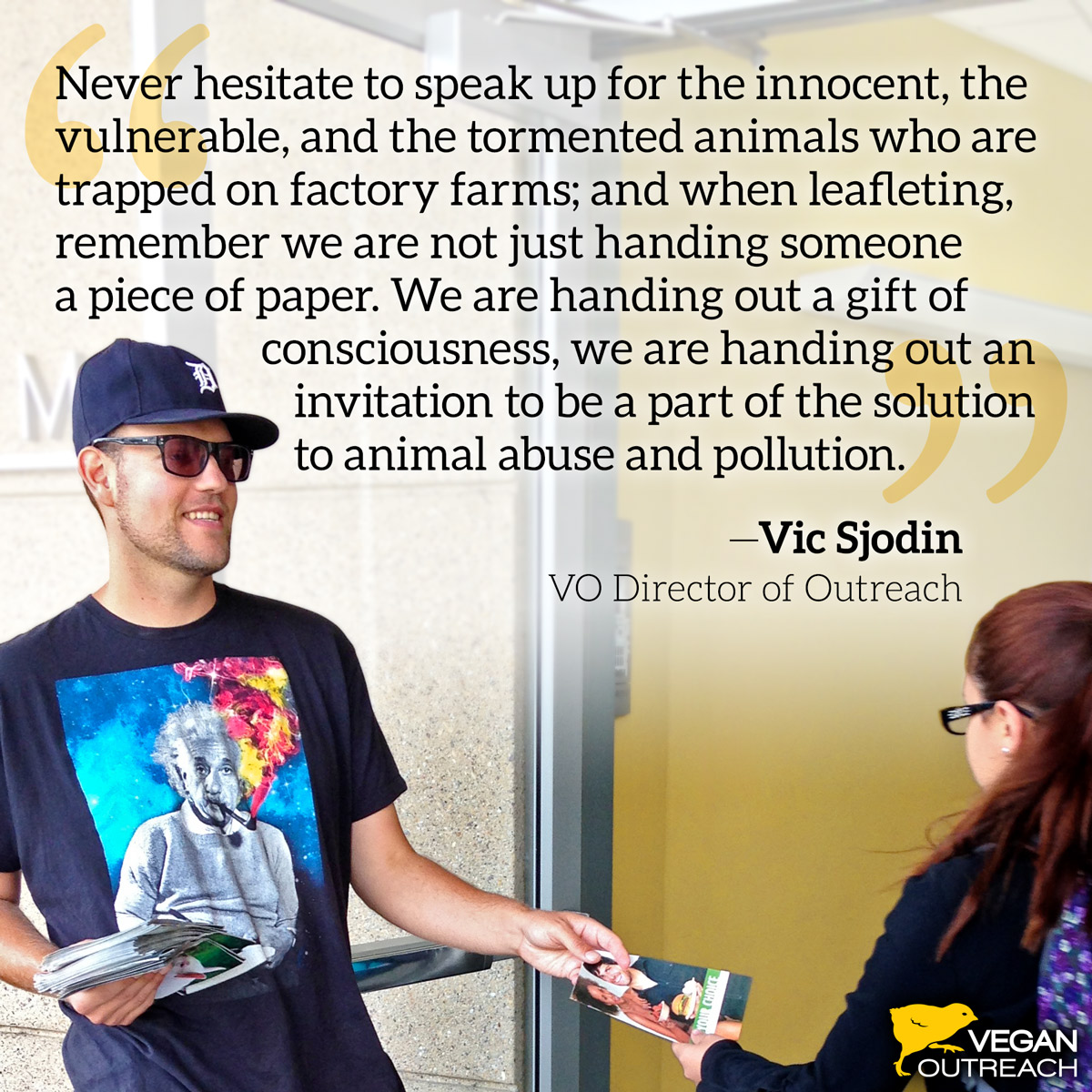
Leafleting for an hour on a college campus can immediately open people’s eyes to the suffering caused by eating animals. Visit Adopt-a-College to get started. Below are some tips from veteran leafleters.
Be sure to first check the school’s academic calendar to make sure classes are being held. Some normal weekdays can be faculty in-service or study days, such that few students are on campus. It’s best not to leaflet after the first day of final exams, Fridays before long weekends, or the day before Thanksgiving.
Weekdays are best. 8 AM is usually the first class start time, and it slows down around 3 PM. While 8 AM is early, leafleting before other groups get active, usually after 10 pm, can result in a higher take rate.
If you can’t be there in the morning, lunchtime (11 AM–1 PM) is also active. And some large schools and many community colleges have student traffic past 5 PM.
We generally use the strategy of showing up and leafleting and if someone asks you to stop, worry about it then. Adopt-a-College has information on the rules for most colleges.
Public universities are supposed to allow leafleting according to federal court decisions, but some don’t follow the rules. Others require that you register and limit where you can stand. Often, security will tell you that you can’t leaflet even though the rules say you can. Asking to see the leafleting or free speech policy can sometimes result in the school letting you leaflet.
Many schools within cities provide a flow of students on public sidewalks where they can easily be handed a leaflet.
Some private schools allow leafleting, but many don’t.
If you’re unsure, it’s best to wear a backpack and keep moving, handing off leaflets to students as you pass them; it’s best not to leaflet security or staff.
At large schools, generally the most students will be found near the student union or library. However, it may be wise to try and find alternative spots to leaflet if the school is constantly leafleted or petitioned because students will be used to rejecting leafleters in these common spots.
At smaller schools, or schools that are not leafleted often, the busiest spots are often the best. Consider staking out a few different spots and rotating between them during busy class changes to reach the maximum number of new students.
Keep in mind that class changes yield the heaviest foot traffic. This is definitely your best time to make an impact!
While leafleting, it’s best not to stay completely stationary. A wider walkway may require you to constantly walk back and forth, approaching as many students as possible. It’s important to stand in the center of the walkway and not off to the side.
Keep in mind that the traffic flow will be going in two directions. You’ll reach the largest number of new students and avoid repeatedly asking the same students if you only leaflet in one direction of the flow.
The following phrases have been effective:
It might seem random, but handing a booklet with a straight arm, not bent at the elbow, can make a big difference in whether someone takes it.
For a video of successful leafleting techniques, check out Vic Sjodin’s How to Leaflet? on YouTube.
You might feel out of place, but remember that students are offered things all the time and it doesn’t seem out of place to them to come across someone handing out leaflets. If you feel nervous at first, it should fade once you’ve offered the booklet to a few people.
Don’t be concerned about knowing every tiny detail about the issues. The majority of students will simply politely accept or decline a booklet.
Very few will grill you on facts. But if someone does and you don’t know the answer to a question, just say you don’t know. It’s best not to try to win an argument with someone but simply be friendly and tell them you’re trying to give students information you wish someone had given to you.
If you have a buddy or two (or more) to help you leaflet, it will be more enjoyable and easier to reach a larger number of people in a shorter amount of time.
Leafleting is generally a very rewarding experience. And you might change someone who goes on to be a prolific leafleter themselves—it’s happened numerous times!
(click image to watch video)
By Josie Moody, Office Manager
*At least that’s what they’d have us believe!
For more weekly videos, please subscribe to our YouTube channel!
Recipe:
Ingredients:
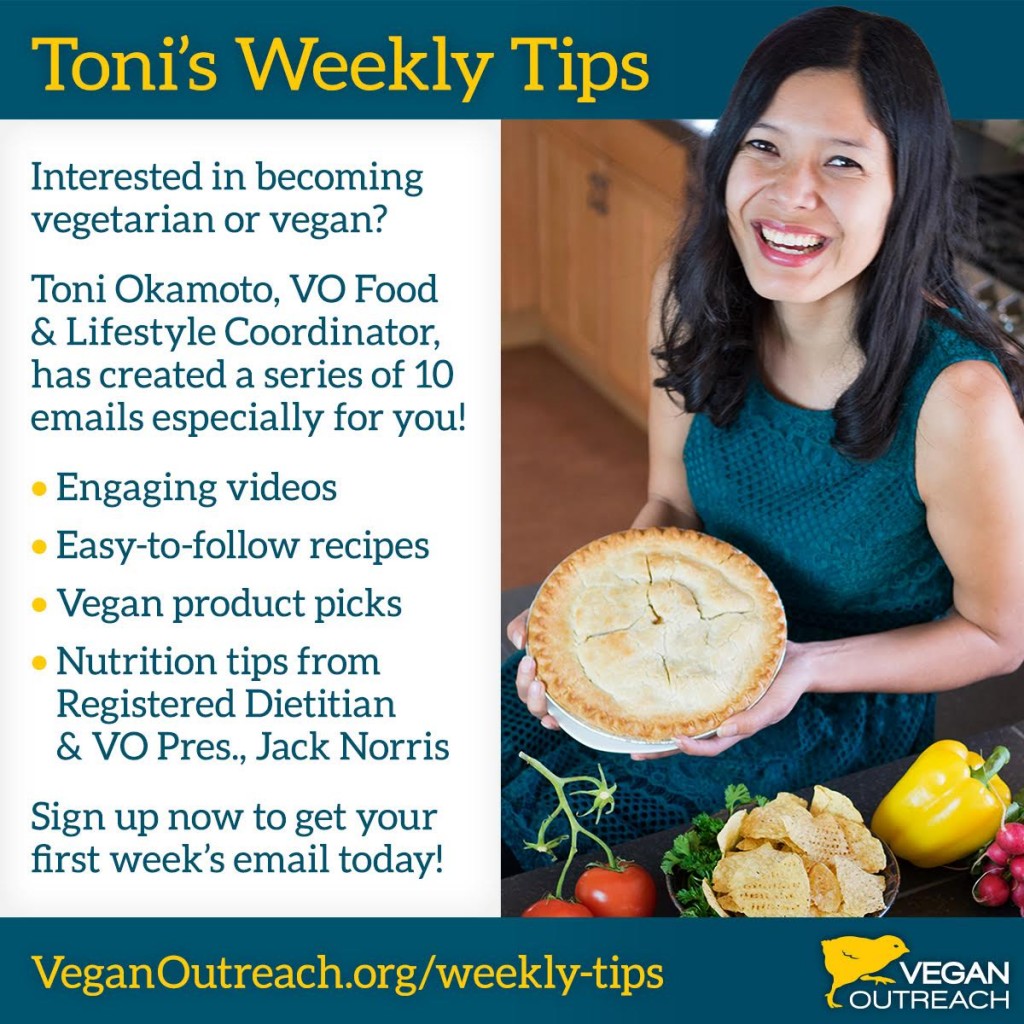
Vegan Outreach Food & Lifestyle Coordinator, Toni Okamoto, has created a 10-week email series to help people interested in becoming vegetarian or vegan.
Each week, we’ll provide engaging videos, easy-to-follow recipes, and featured vegan products, as well as nutrition tips from Registered Dietitian and VO President, Jack Norris. This will serve as an additional resource to curb veg recidivism and set new vegans up for success!
To sign up for the email series, fill out this form.